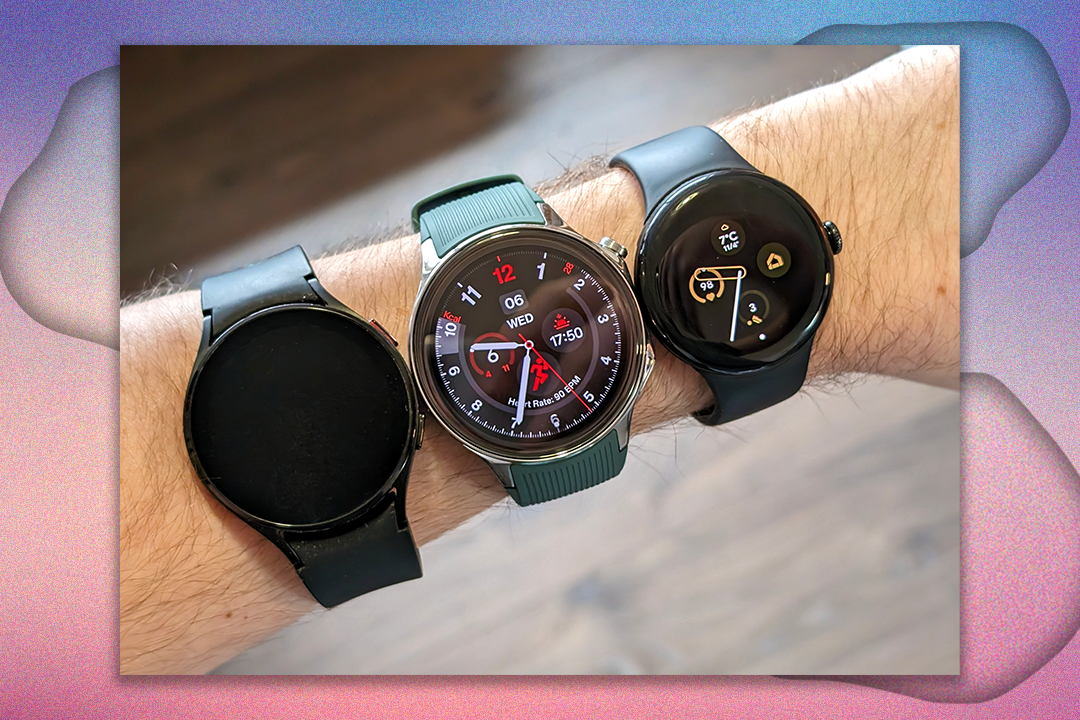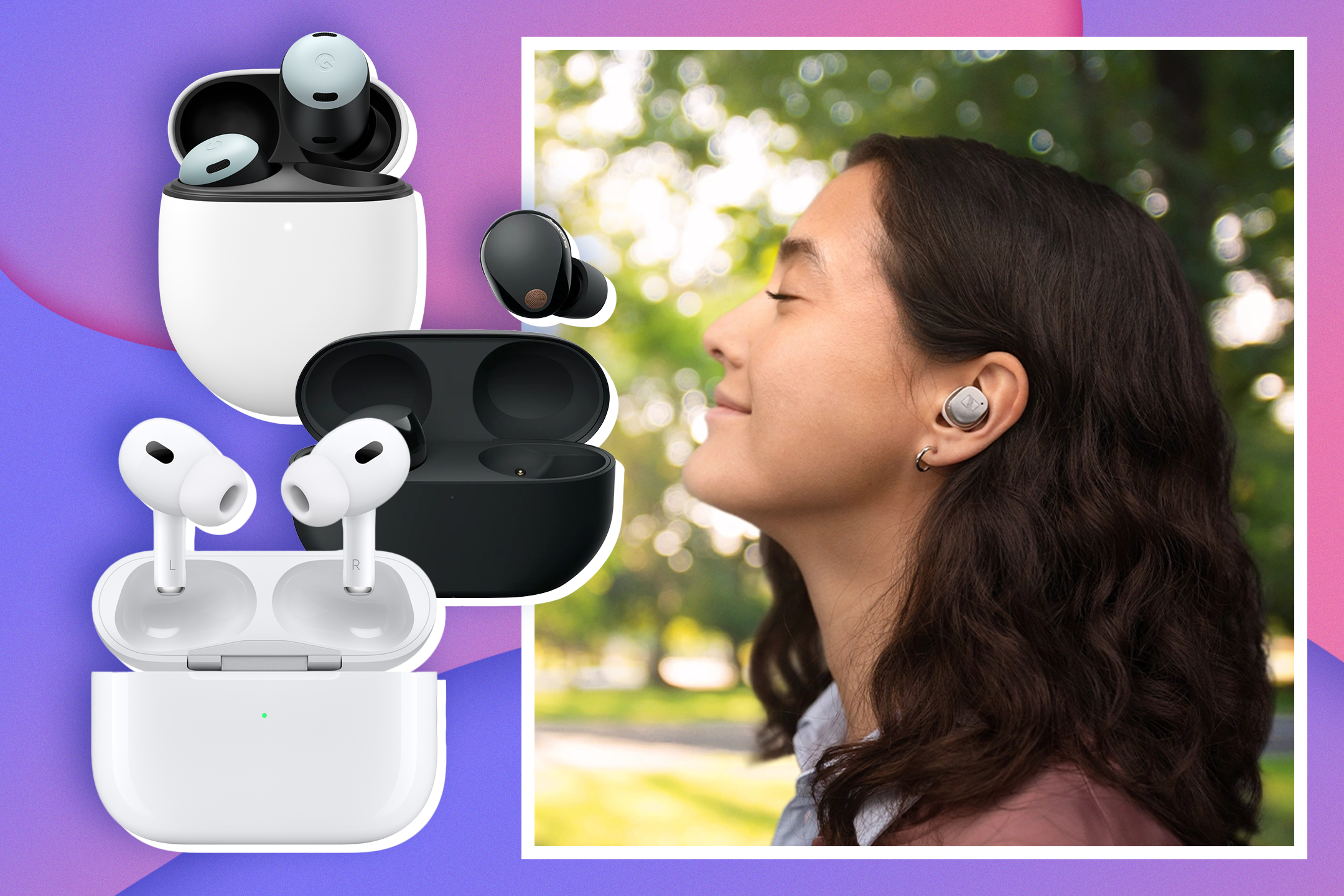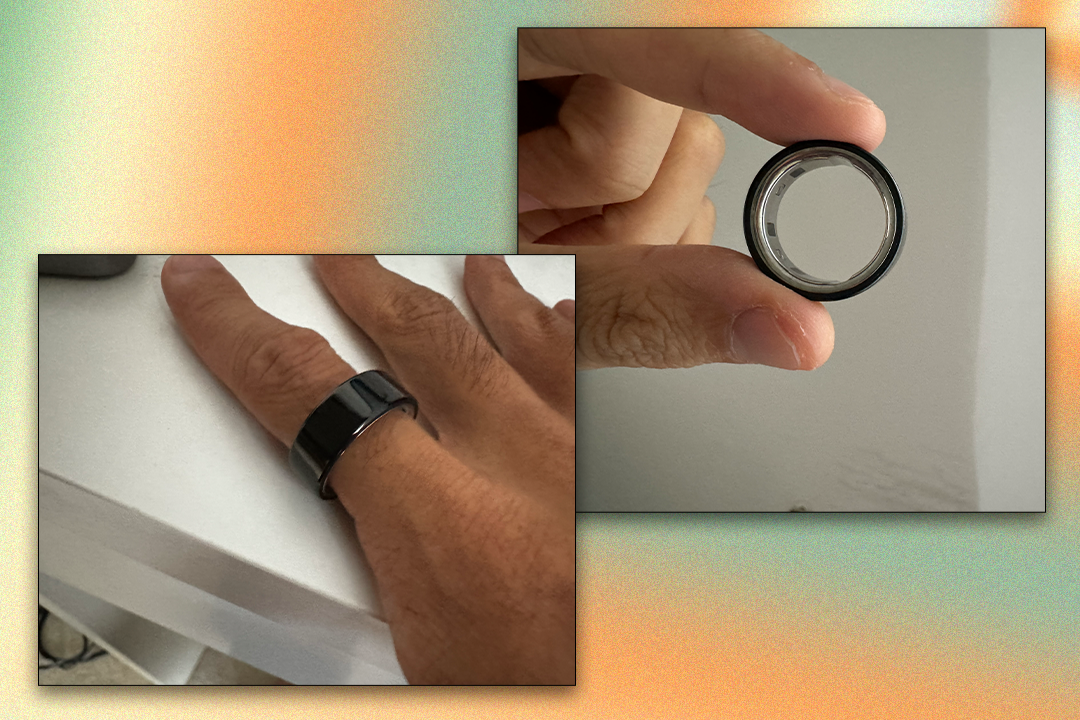The Independent's journalism is supported by our readers. When you purchase through links on our site, we may earn commission. Why trust us?
The best smart rings to help track sleep, wellness and more
Finger-worn devices are the new tech health craze, with even more smart rings launching this year
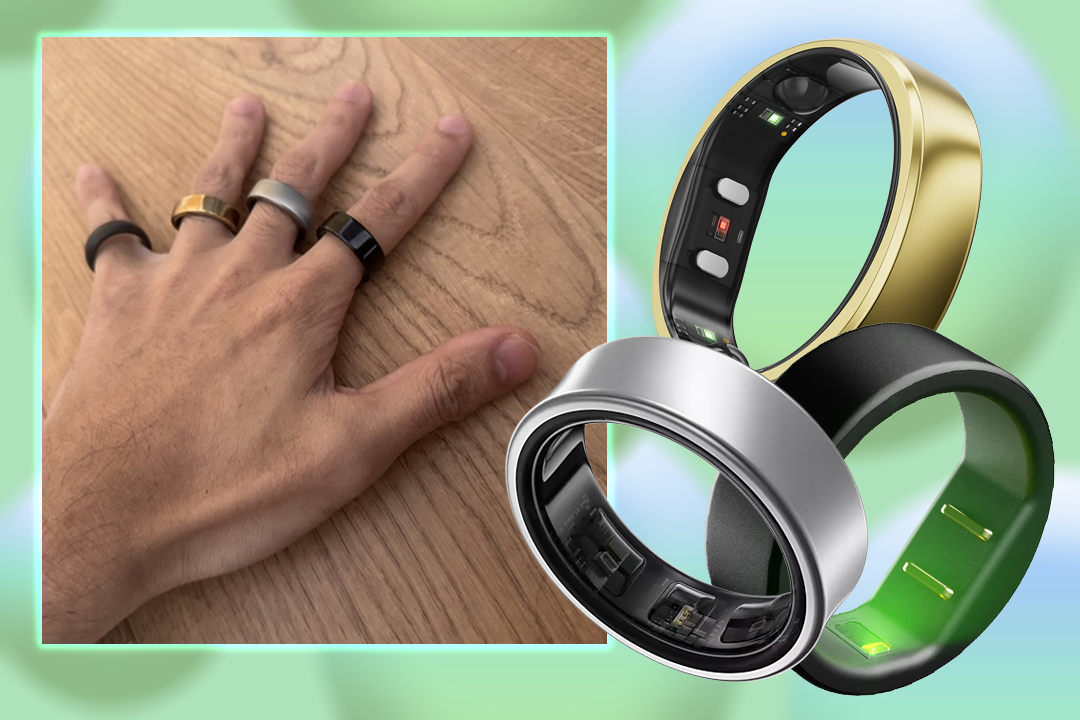
Once seen as a bit of a niche gimmick, smart rings have quickly become one of the most coveted wearables around. Discreet, stylish and packed with sensors, they can track everything from your sleep cycles to daily activity, all without strapping a chunky smartwatch or fitness tracker to your wrist.
The Oura ring has long dominated the space, spotted on celebrities and wellness enthusiasts alike, but it no longer has the market to itself. Samsung joined the fray with the Galaxy ring last year, Circular recently launched its second-generation device, and Ultrahuman has been rolling out more and more features. Even Apple is rumoured to be developing its own ring that could work with the Apple Vision Pro.
I’ve been rigorously testing all the latest smart rings to see which are worth your money. Right now, the fourth-generation Oura ring is still the best smart ring overall, thanks to its accurate sleep tracking, comfortable design and easy-to-use app, though Samsung’s Galaxy ring is a really impressive option for those in the Samsung ecosystem. I love its charging case and gesture support. Below, I’ve rounded up my top smart ring picks for 2025.
How I tested
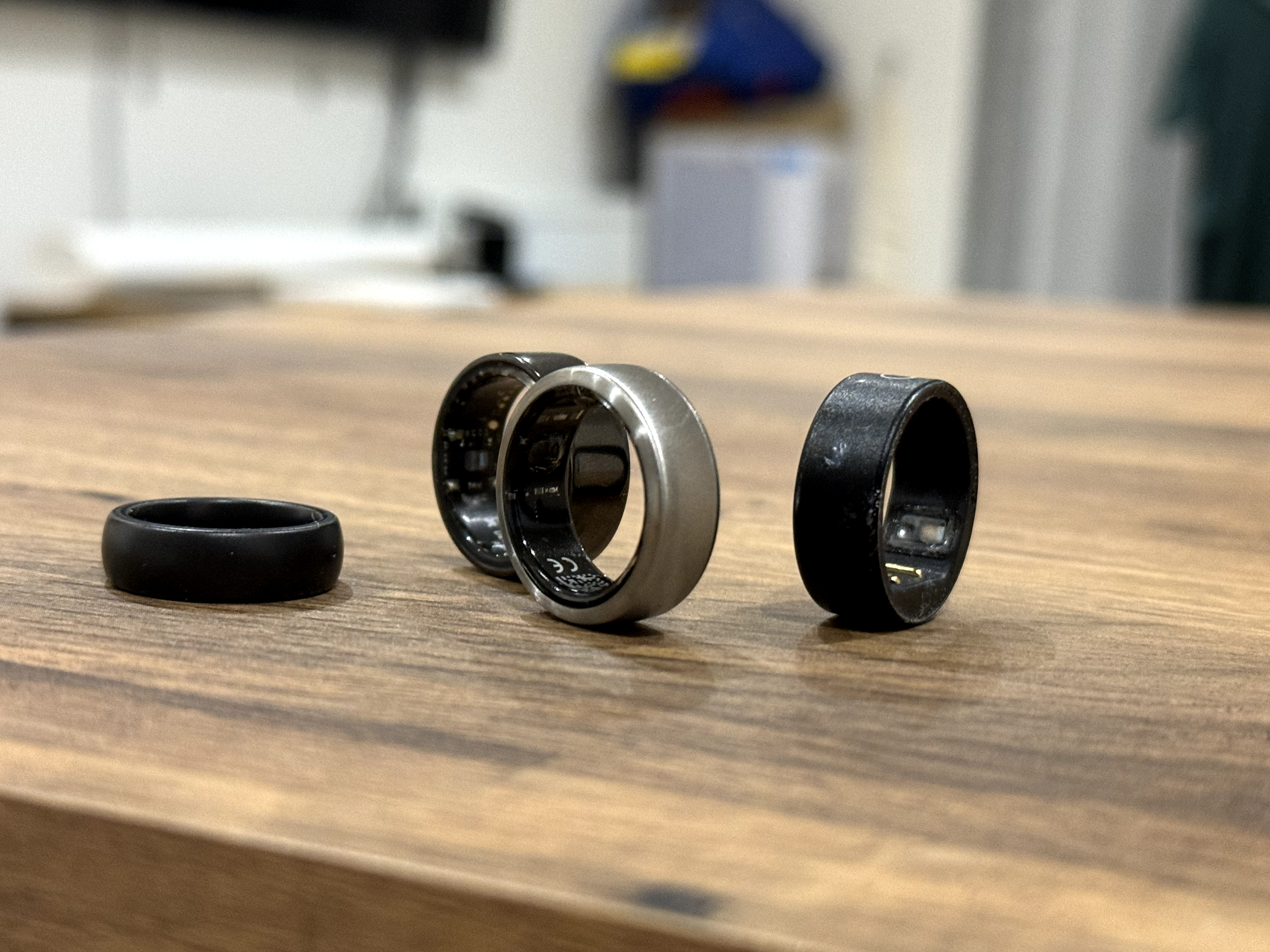
Finding the right fit was the first step. Every smart ring requires a sizing kit before purchase, and I quickly discovered that being a size 8 in one brand doesn’t mean you’ll be a size 8 in another. Getting that snug fit is crucial. Too loose and the sensors can’t track properly, too tight and you’ll never want to wear it to bed.
Because smart rings need weeks of data before they start showing their true colours, I’ve been testing each one for several months. That’s given me time to evaluate not just the sleep insights but also how they how well they perform during the rigours of everyday life, from running and gym sessions to long days at my desk. Here’s exactly what I looked for:
- Fit and comfort: I looked at whether each ring stayed snug without pinching, and if I could sleep and exercise in it without noticing it too much.
- Sleep tracking: I looked at how well each ring measured both restless and deep sleep over weeks, not just a few nights, and compared its accuracy to other wearables like my Apple Watch and Whoop 5.0.
- Activity tracking: I noted how accurate each ring was during runs, workouts and when counting steps, as well as recovery and stress data.
- Extra features: It’s hard to differentiate in a crowded market, so I looked at extra features such as haptic vibrations, NFC payments, gesture support, charging cases and sleek app integration when testing each ring.
- Battery life: I hate charging things, so it was mighty important to look at how long each ring lasted between charges – did they really last as long as they said in the marketing material?
- Design: It’s still jewellery, after all. I noted whether I actually enjoyed wearing it day to day (and yes, which ones drew compliments).
Why you can trust IndyBest reviews
Alex Lee is The Independent’s senior tech critic and has been testing the latest technology and smart gadgets for nearly a decade. From smartwatches to fitness trackers, he’s tried hundreds of wearables over the years, assessing everything from sleep- and exercise-tracking performance to specs and comfort, as well as interviewing the people in charge of designing them.
The best smart rings for 2025 are:
- Best overall – Oura Ring 4: £349, Ouraring.com
- Best budget buy – RingConn gen 2: £285, Ringconn.com
- Best for Samsung users – Samsung Galaxy Ring: £399, Samsung.com
- Best subscription-free ring – Ultrahuman Ring Air: £329, Amazon.co.uk
1Oura Ring 4

- Best Smart ring overall
- Sizes 4-15
- Weight 3.3-5.2g
- Thickness 2.8mm
- Width 7.09mm
- Water resistance Up to 100m
- Battery life Up to eight days
- Subscription £5.99 per month
- Why we love it
- More comfortable, durable design
- Class-leading features
- Superior activity tracking, compared with competitor smart rings
- Take note
- No charging case
- Subscription needed to get the most out of the ring
- New features can all be found on the previous model
The smart ring market really exploded last year, but no one has since been able to knock Oura off its perch. Now on its fourth-generation wearable, the newest Oura Ring 4 refines health, sleep and wellness tracking even more to solidify its status as the best overall smart ring. And in the past year alone, Oura’s released 24 new features to help it compete.
With its fashionable design, Oura’s ring doesn’t merely track your sleep, activity, heart rate and a whole bunch of health metrics, including daytime-stress, cardiovascular age and period and fertility predictions, but it also earned me a wealth of compliments, thanks to its bulk-free all-titanium design that felt weightless on my finger.
Coming in six different finishes, including glossy and matte styles, the newest Oura Ring is completely round and boasts recessed internal sensors that make it more comfortable to wear than the previous version. Those sensors make it more accurate than ever, leading to fewer missing data points throughout the night as it rotated on my finger.
The Oura Ring crunched all my activity, sleep and heart rate data data into a readiness score, so I knew how hard we could go at the gym or whether I needed to take it easy. Oura also gave me a sleep score based on how well I’d slept that week. Activity tracking has also been massively improved with the latest updates. It learned what activities I was doing and matched it to my heart rate, automatically tracking 40 different workouts really effectively. No smart ring comes close in the activity department.
It still excels at its original purpose, tracking sleep better than an Apple Watch, and thanks to the new smart sensing technology, it was able to track the four stages of sleep more accurately, as well as provide me with my blood-oxygen levels and heart-rate variability (HRV). There was more detailed sleep data here than on any wrist-based smartwatch or fitness tracker I’ve tested, while HRV enabled the Oura to track daytime stress.
Other new features recently launched include an AI Advisor who helps you keep track on top of your goals, a symptom radar, which tells you if you’re getting sick, and a meal tracker, so you can see how different mealtimes might affect how you sleep and move. It’s really easy to set tags, monitor your wellbeing and learn there is to know about your body. It’s the closest a smart ring has come to replacing my smartwatch.
The only real downside is Oura uses a subscription model, so, on top of the cost of the ring, you also have to shell out for a £5.99 membership – it’s useless without one. Other smart ring brands are now rolling out wearables without subscriptions, making them more compelling offerings. I’m also slightly disappointed that there’s no NFC payments or a charging case on the latest model.
2RingConn gen 2

- Best Budget smart ring
- Sizes 6-14
- Weight 2-3g (depending on ring size)
- Thickness 2mm
- Width 6.8mm
- Water resistance IP68
- Battery life Up to 12 days
- Subscription No
- Why we love it
- Really narrow, light design
- Comes with a charging case
- Has a long battery life
- Has a sleep apnea detection feature
- No subscription fee
- Take note
- Activity tracking isn’t very good
- App insightscould use some work
RingConn is one of the newest wearable brands to make a splash in the smart ring arena. Founded in 2021, it, like Oura, has a heavy focus on science-backed sleep tracking. Its second-generation smart ring launched last summer, and it’s one of the most affordable rings I’ve tested with some impressive specs, sleep tracking and a long battery life.
Extremely thin, it’s one of the narrowest and lightest smart rings I’ve tried, coming in silver, gold and black finishes. With a titanium alloy outer, it’s really comfortable to wear, despite having chunkier protruding inner sensors than the old third-generation Oura Ring. It’s not fully round, featuring more of a squircle shape that positions against the inside of your palm, helping it sit snugly in place. I tested the gold finish, and it held up well to potential scratches.
The best design choice has to be the charging case. Quite bulky, it can recharge the ring 15 to 20 times (much more than the Samsung Galaxy Ring’s 1.5 times), and it only takes 90 minutes to charge. Despite being so small, it lasts up to 12 days – the longest battery life out of any smart ring I tested. Plus, it has some really great health-tracking features, including sleep tracking, stress tracking, heart rate, SpO2 and skin temperature – all fairly accurate. It also offers some insights into your wellbeing inside the app, though I found this was pretty lacking. It’s not great with activity tracking, however. There’s no automatic activity tracking besides steps, and you have to manually start outdoor cycling, running and walking from inside the app.
The big flashy new feature is the sleep apnea monitor, which can allegedly detect signs of the condition when you’re sleeping. The company says hundreds of studies have been conducted to confirm its reliability. To use the feature, you have to start a session from inside the app before you go to sleep, then end it in the morning. It drains the battery really fast, though, so, watch out. I haven’t received any sleep apnea signals (which is a good sign, I think).
The best part about the RingConn gen 2 is it costs a lot less than its rivals, has a nice thin design, and there’s no subscription fee. A really great affordable option, with a nice charging case, to boot.
3Samsung Galaxy Ring

- Best Smart ring for Samsung Galaxy users
- Sizes 5-13
- Weight 2.3g to 3g (depending on ring size)
- Thickness 2.6mm
- Width 7mm
- Water resistance IP68
- Battery life Up to 7 days
- Subscription No
- Why we love it
- Works seamlessly with the Samsung Galaxy ecosystem
- Love the charging case
- Lightweight design
- Neat gesture support
- Good sleep tracking
- Take note
- Activity tracking could be better
- Wish there were NFC payments
Samsung probably had Oura quaking in its boots when it launched its very own wearable smart ring last summer. Costing £50 more than the cheapest Oura Ring 4, but free from subscription fees, it’s Samsung’s take on the wellness companion and is backed by the tech giant’s AI smarts, but I’d only really recommend the Galaxy Ring to Samsung Galaxy users – Android users get a slightly pared down experience. Got an iPhone? It won’t work at all.
Available in three finishes, including black, gold and silver, the ring comes in a really nice-looking clear charging case that holds up to 1.5 recharges. It looks a bit like the old Galaxy Buds2 case, snapping shut with a magnetic clunk and slotting nicely onto the charging dock inside. This is one of the best design choices I’ve seen for a smart ring. The decision to use a charging case is pure genius, meaning I never knocked the ring onto the floor, and there are LED lights around the edge of the case that tell us when it’s fully charged.
It’s about the same width and thickness as the Oura Ring 4, albeit it slightly lighter in terms of weight, and features a fully titanium design. It’s fairly comfortable, even with the sensors bumping up against my skin, and I love that I can get it to flash it using Find My whenever I lose it (always happens), as well as double pinch to turn alarms off.
The feature set is pretty similar to the Oura Ring 4, tracking heart rate, steps, stress, menstrual cycles and delivers high and low heart rate alerts and inactive alerts. Like many smart rings, sleep tracking was really good, with the ring taking into account my blood oxygen level, skin temperature, respiration and movement to tell me about my sleep cycles and stages. It doesn’t have any pregnancy or cardiovascular age features, however. Like the Oura, you get an energy score, which crunches all your data into one number to tell you how ready you are to take on the day.
There is automatic activity detection for walking and running, though I found myself having to manually start workouts in the Samsung Health app for anything else. It wasn’t hugely accurate, though, in terms of cadence tracking for runs. The AI smarts come in the form of wellness tips based on your energy score. Not hugely useful, I found Oura’s AI Advisor to be more beneficial as it all felt really generalised. High stress scores? Do some meditation.
As mentioned above, this is a great Samsung Galaxy companion. Samsung doesn’t see this as a standalone device like the Oura Ring. Instead it works best when its used in tandem with the rest of its gadgets, including the Galaxy Watch. You can delegate heart-rate tracking to the watch, for example, so that the ring uses less battery. If you’ve got a Galaxy phone and Galaxy Watch, the Galaxy Ring just works seamlessly with it all.
4Ultrahuman air smart ring

- Best Subscription-free smart ring
- Sizes 6-12
- Weight 2.4g to 3.6g (depending on ring size)
- Thickness 2.4mm
- Width 8.1mm
- Water resistance Up to 100m
- Battery life Up to 6 days
- Subscription No subscription fee
- Why we love it
- Really good sleep tracking
- Pretty design
- No subscription fees
- Take note
- No automatic activity tracking
- Feels bulkier than the Oura ring
Ultrahuman is one of the latest smart ring companies on the market. The brand launched its first ever R1 smart ring in 2022, and replaced it with the Ultrahuman air – a lighter, thinner smart ring – in 2023.
The Ultrahuman air comes in matte black, a mirrored aster black (the one I tested), gold and silver. It features a bump on the inside, to help you position it on your finger, so it captures your data, and, while it is comfortable to wear, that extra 0.2mm of width did occasionally feel like it was getting in the way whenever I was using or holding my phone.
The ring looks sleek, minimalistic and is made from a durable titanium. It is kitted out with a heart-rate sensor, temperature sensor and accelerometer, and it can monitor everything from steps to sleep to blood-oxygen levels.
The device will also give you a movement score, which is based on how much you’ve moved on a daily basis, rather than a weekly one. I’m not sure if this is better or worse, because I was inevitably going to be less mobile after a few consecutive days of intense workouts.
Ultrahuman is able to track workouts, but it’s currently in beta, and it can’t detect workouts automatically like the Oura ring, so, you need to start a workout from inside the app to get it to track. Once you do start tracking your workouts (there are a list of sports and activities in the app), you’ll get a cardio fitness score, using your VO2 max, which is the amount of oxygen your body uses while training. It’s a pretty cool feature.
Like the Oura, the Ultrahuman is better at sleep tracking – accurately identifying all our stages of sleep, heart-rate variability, time asleep and more, showing the data in a nice graph inside the app and giving us a sleep index score. It also put our movement and sleep into an overall readiness score, so I knew when I was good to go harder at the gym. It is also waterproof up to 100m.
I am a big fan of the charging base, too, as the Ultrahuman air fits nice and securely onto it. However, this ring’s charge doesn’t last as long as the Oura – you’ll get around six days of use before the Ultrahuman needs charging again.
The best part? You don’t have to pay an ongoing subscription to access (pretty much) all the same features as the Oura.
5Oura Ring, gen 3

- Best Value for money smart ring
- Sizes 6-13
- Weight 4-6g (depending on ring size)
- Thickness 2.5mm
- Width 7.9mm
- Water resistance Up to 100m
- Battery life Up to 7 days
- Subscription £5.99 per month
The Oura Ring 3 might not be the latest model but it’s still one of the best smart rings you can buy. In fact, it’s nearly identical to the Oura Ring 4 in terms of core features, and is more affordable.
Like its successor, the Oura Ring 3 comes in two styles: heritage (with a flat-top design) and horizon (a completely round band). Both are crafted from lightweight titanium, making them really comfortable to wear. The only difference between the third-gen and the Oura Ring 4 is the newer model refines the internal sensors slightly, to improve fit and comfort but, unless you’re wearing both side by side, you won’t really notice.
Functionally, the third-gen works as the newer model does, just missing out on a few things. It still tracked my stats really well, including my sleep, heart rate, activity levels, blood-oxygen saturation, heart rate variability, stress and body temperature trends. I absolutely love the readiness score, too (which helped me gauge recovery and energy levels), as well as the little sleep score. The third-gen doesn’t have night-time SpO2 tracking, however.
It’s not the best at automatic activity detection. It did sometimes struggle to recognise workouts, especially strength training and HIIT sessions, without manual input. I found the Oura Ring 4 did this better and more accurately.
Sleep tracking is still absolutely fantastic, offering insights that go beyond what most wrist-based fitness trackers provide. Temperature tracking also flagged when I was sick and when I needed to rest up. Battery life lasted ages, too – a huge seven hours on a single charge.
If daytime SpO2 monitoring and slightly better activity tracking aren’t dealbreakers, the third-generation model remains a great choice, especially now it’s had a permanent price cut. Just remember, it still has that monthly subscription, so, you’ll need to factor that into the price.
6Circular ring slim

- Best Entry-level smart ring
- Sizes 6-13
- Weight 2g
- Thickness 2.2mm
- Width 8.8 mm (depending on ring size)
- Water resistance IP68, up to 1.5-5m for 30 min
- Battery life Up to 5 days
- Subscription No
- Why we love it
- Interesting haptic vibration features
- Can snooze alarms using the capacitive touch sensor on the ring
- Super light
- Take note
- Limited exercise tracking
- Clunky charger
- Wider band makes it chunky
Circular has been going for quite a while, having been founded in 2016, but the French firm only released its first smart ring in 2020. In 2023, it also launched the Circular ring slim – the thinnest smart ring on the market.
Design-wise, it’s not the nicest-looking smart ring. It’s made from aluminium and carbon fibre rather than titanium like other smart rings I’ve tested, meaning it’s not only less durable but also just looks a lot cheaper. While it’s the lightest, thinnest model around, it’s also a whole lot wider. After testing for a few months, I definitely preferred titanium-based smart rings over Circular’s aluminium-based design, which feels and looks a little plasticky, and isn’t swim-proof.
Where Circular differs from its competition is in its feature set. The Circular smart ring slim features a green, infrared and red optical pulse sensor, a three-axis accelerometer for steps and a haptic vibration motor. That motor is really neat. Unlike other smart rings, you can set up alarms, so your ring vibrates to gently wake you up. To snooze your alarm or turn it off, you just tap on the capacitive touch sensor built into the logo on the ring. It’s cool, and not something I’ve seen other smart rings try before.
While it can track your steps and VO2 max, based on your blood-oxygen levels, you can’t track specific exercises. I also found some accuracy issues with the Circular ring slim’s data. It’s definitely better at sleep tracking, though – managing to figure out my sleep cycles and stages of sleep, but it did occasionally miss spots that my fitness tracker, Oura and Ultrahuman picked up.
While the app is a little bit messy, I was actually quite fond of Circular’s circles, which puts all of its core features at the top of the app. You can view your alarms, see how you slept, how much energy you have to take on during the day, and there are even circles for guided breathing, medication reminders and stress tracking. I also liked the little digital assistant, who asked me questions and helped me keep track of my sleep and energy levels.
The Circular ring slim is far from perfect. I absolutely hated the way it charged via a weird USB-C contraption, and it lacks exercise tracking, but there are features here that you won’t find on the Oura, such as haptic alarms and medication reminders.
Your questions about smart rings answered
What is the best smart ring?
The smart ring market is still evolving but Oura is still the market leader. The Oura Ring 4 is the best smart ring out there right now. Its sleep tracking is class-leading, it looks gorgeous, has heaps of features, works with all smartphones, fits really well, and it’s really accurate. For those of you with a Samsung Galaxy device, the Galaxy Ring is the best for you, with lots of neat features, including gesture support and that awesome charging case. RingConn has recently entered the market, too, and its long battery life is a huge differentiator.
Best of the rest
I’m constantly reviewing new smart rings, and not all of them make the cut. These are the one that didn’t quite earn a spot in my top picks for one reason or another. Depending on your needs, it may still be worth considering.
The MuchBetter Ring is a clever idea: a contactless payment ring that never needs charging, but in practice, it’s a bit hit-and-miss. While it’s sleek, lightweight and essentially free (as long as you top up £50), the payment gesture can be frustratingly awkward, sometimes failing altogether. MuchBetter insists this is user error, but when you’re repeatedly knocking your fist against a terminal with no response, it starts to feel more like a design flaw. There are also concerns about potential scratching and mixed Trustpilot reviews from customers withdrawing money. A nice concept, but not quite polished enough to make the cut.
I also tested the Amazfit Helio Ring, which didn’t make the cut either. While it’s one of the most affordable smart rings I’ve tried at just £109.99, and does a decent job with sleep and recovery tracking, there are a lot of trade-offs. Battery life is terrible at around three to four days, the Zepp app feels really half-baked and clearly quite rushed, and the ring only comes in three sizes and one finish. It’s a good entry-level option if you just want a budget sleep tracker, but it’s not polished enough to rival the others.
For more new and exciting tech products, check out our review of the best virtual reality headsets






